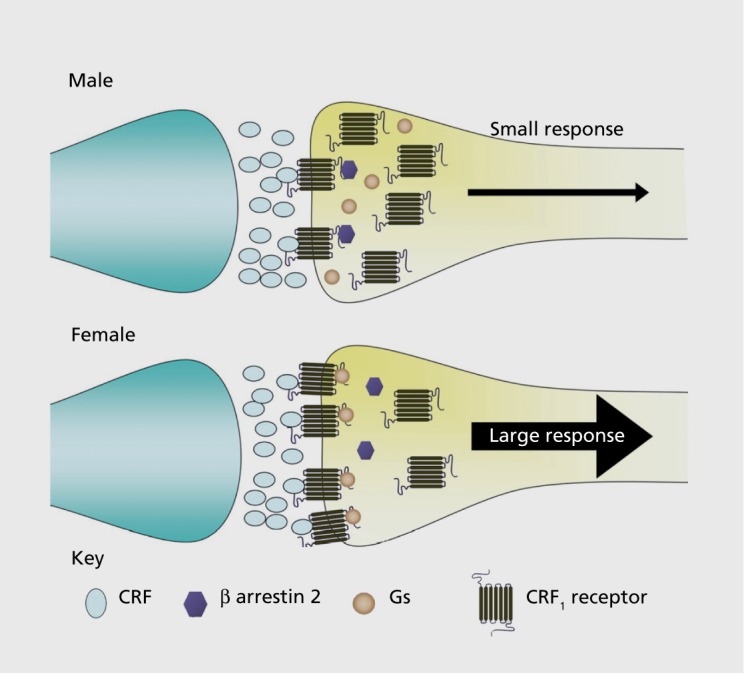Figure 2. Schematic depicting sex differences in corticotropin-releasing factor subtype 1 receptor (CRF1) trafficking. In males, when corticotropin-releasing factor (CRF) released from presynaptic axon terminals (blue) binds to CRF1 on the plasma membrane of locus coeruleus dendrites (yellow), β-arrestin 2 associates with CRF1 and initiates receptor internalization. This results in an attenuated response to subsequent CRF. In females, stress-induced association of β-arrestin 2 with CRF1 is less than in males, perhaps because of the increased CRF1-Gs association. As a result, stress does not induce CRF1 internalization and the response of locus coeruleus neurons to CRF is relatively larger in females. Gs, stimulatory G-protein.

